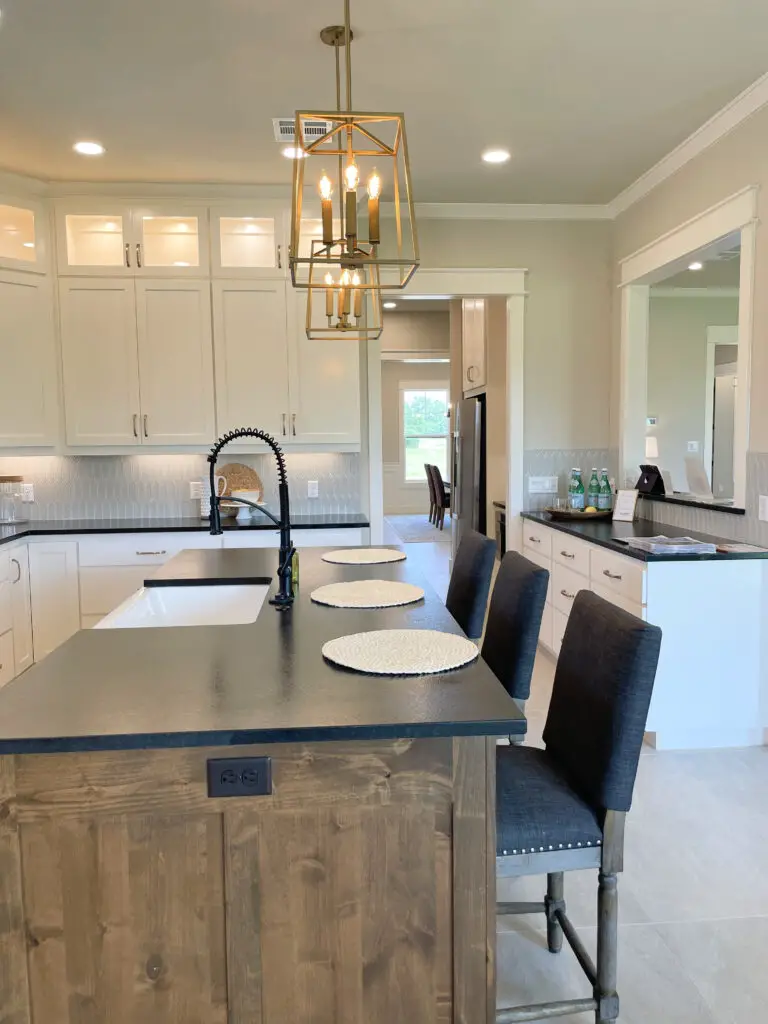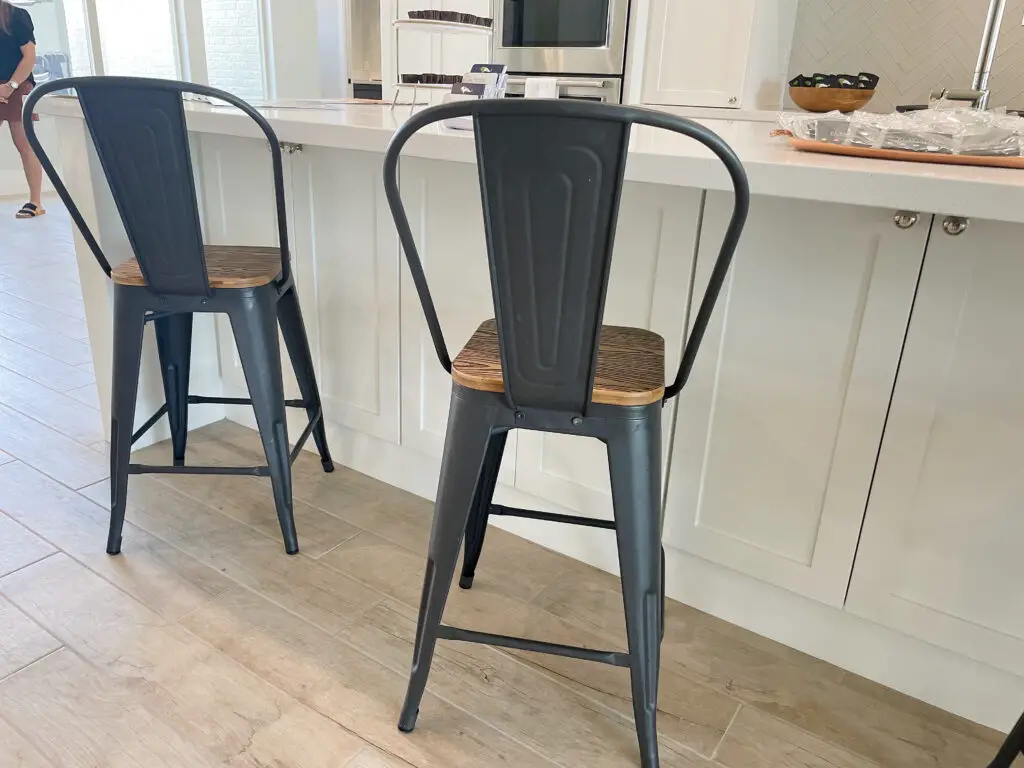Sometimes the barstools you fell in love with at the store don’t make your heart flutter in your home the same way. Sometimes they actually look absolutely awful and you begin questioning your personal taste. Trust me, we’ve all been there even if it wasn’t with barstools. That’s honestly because interior styling isn’t easy, but there are always plenty of resources to help!
If you’re reading this, congratulations, that means you already have one great resource in your design book! Now, on to everything you need to know about barstools. Still wondering why yours don’t look right in your home or just need help finding the right ones? I’ll walk you through everything you need to know from height and spacing to style.
Contents
Barstools vs. Counter stools

Okay now, let’s clear the air first. Not all stools are barstools. Barstools are around 30″ tall and are made with a standard 42″ bar height in mind while counter stools are around 24″ high and made to fit perfectly beneath your standard kitchen counter sitting around 36″ above the ground. Is this news to you?
Well, I’ll be honest, most of my clients, friends, and family had no idea about the difference between counter stools and barstools so I tend to use “barstools” as an all-encompassing term for a stool in your kitchen. This helps minimize confusion, but differentiation is important when picking the right stool for your kitchen.
How Tall Should My Stool Be?

As I mentioned, barstools and counter stools are different heights, which is very important to understand when deciding what stools you need for your kitchen. As a general rule of thumb, the top of the stool should be 9″-12″ from the bottom of the counter or table. This allows plenty of leg room to maneuver in and out of the chair. Any less and you will feel fairly cramped sitting down and any more and it will not only look awkward, but it will also feel awkward.
What does this have to do with counter stools and barstools you ask? Well, if a counter stool averages around 24″ tall, you wouldn’t want it on a taller bar area in your kitchen. Instead, you’d likely see a counter stool used around your island since that should be right around 36″ tall (36″-24″= 12″).
The key here is to be mindful of how tall the area you’re looking to find seating for. You should first measure the height of the island, counter, or bar you want to find a stool for and then subtract 9″-12″ from that to find your ideal stool height. Don’t even get your hopes up searching for stools that won’t fit your space. I promise you it won’t end well (speaking from experience here).
How Many Stools Should I Get?

This is a great question and the answer really depends on your space. Just as you measured the height of your counter you need to measure its width as well. Ideally, every bar stool should have 21″-24″ of space. If that didn’t make sense to you, here’s another way to think about it. There should be 26″-30″ from the center of one stool to the center of another. Lastly, try to have around 12″-14″ of space from the edge of the last stool to the edge of the island.
You’re probably thinking “that’s a lot of math.” While it is a lot of numbers, the guides are there to do just that: guide you. Don’t get too caught up if the numbers don’t align perfectly. The important thing is that there is enough elbow room between the stools and they aren’t just crammed in there. If your stool is a little wider but fewer of them and vice versa.
Should I Get One With A Back?

The type of stool you choose is completely up to you. It’s mostly about your personal preference, but there are some pros and cons to consider for each type. If you want a quick breakdown of each, check out the below:
- Backless Stool: A backless stool creates a clear sightline into your kitchen to create an open view to display your counters and any countertop decor. These stools tend to have a smaller frame and therefore also take up less space which is ideal for smaller kitchens as they help the space feel more open. Unfortunately, they aren’t exactly the most comfortable options so guests may not want to sit there long.
- Stool With Back: Stools with backs tend to take up a bit more space and block the view of some of your kitchen counters. To help balance this you will need taller decor that can clearly be seen over the chair back. These also tend to be a lot more comfortable for guests but you will have to have less since they take up more space.
- Stool With Arms: These tend to be the most comfortable for guests and have many of the same pros and cons as stools with backs. The big downside here is making sure your arms don’t sit too high and can still rest under your counter. Last, you need to make sure these are plenty wide so guests don’t feel restricted in them.
- Swivel Stools: I love a good swivel stool! They are great when you want to allow flexibility for your guests to turn any which way. This works particularly well in open-concept floor plans. The only real downside is that they tend to end up facing every which way and can look a little messy if their swivel gets loose.
What’s The Best Material For My Stool?

This is another brilliant question! The material you choose for your stool makes a huge difference in the overall look and feel of your room. I like to use the stool material to help bring something new into the kitchen. To help you understand, here are some examples:
- Wood, bamboo, or rattan: These work well in cool-toned kitchens as the earthly element brings a warm, lively feel to the space. This can help create a more natural feel in the kitchen and help transform the space.
- Metal: Depending on the metal, metal barstools can help bring either a more modern or industrial feel to the room. It also helps bring in a new material into the space and helps prevent the room from feeling too one-dimensional.
- Fabric: This one is easy! The fabric helps the room feel a lot more cozy & comfortable. It’s a great option for comfortable seating and helps soften a room that tends to be full of heavier, solid materials.
Remember to take time when purchasing your new barstools. Carefully consider your options and determine which one will work best in your space.



Where are the stools with wooden legs and dark gray fabric from? Metal grommets along the sides.